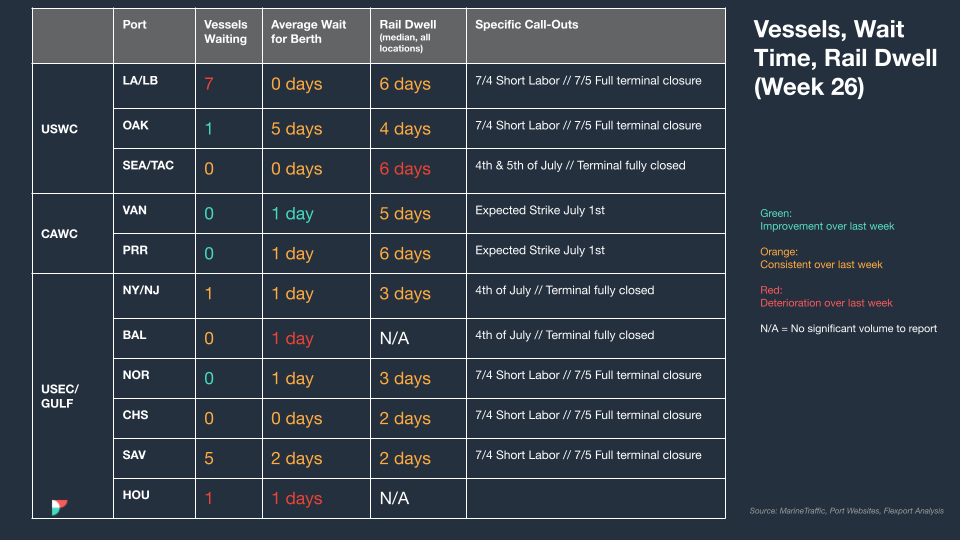Trends to Watch
- [Ocean – TPEB] Effective capacity remains at an oversupply as carriers announce more blank sailings and try to reign in further rate drops (rates are currently at pre-pandemic levels). Expect possible loading limitations on some U.S. East Coast and Gulf Coast services due to the draft restrictions on the Panama Canal.
- [Ocean – Indian Subcontinent] Available capacity remains high with strong equipment availability at coastal ports. Some inland container depots (ICDs) are reporting deficits and availability is dependent on the import mix into these inland destinations, with 20ft equipment remaining the most challenging.
- [Ocean – TAWB] Rates continue their downward trend as capacity remains high while demand stays low. Expect this trend to continue through Q3’23. Equipment is widely available at all major European ports—with decreased congestion in both the U.S. and Europe container turnaround is quicker, leaving more equipment available.
- [Air – Asia] After bottoming out in May, rates on Asia-EU routes have rebounded and the difference between spot rates and fixed contracts is reducing. Overall, demand has recovered, though freighter capacity is being retired—specifically on Transpacific as they lose money at low sell rates and high fuel costs. This will continue if the rate and fuel cost situations don’t improve.
- [Trucking – U.S. import/export] Starting July 1st, 2023 the regulated trip rates and hourly comp for local dray in Vancouver, BC increased by 6.2 % for all local container drayage services. Wildfires in Alberta have delayed rail moves, yard utilization has stabilized but rail is underperforming. U.S. wet and rail ports are largely fluid, with truck turn times under one hour at most ports. It remains to be seen what impact labor actions at B.C. ports will have.
North America Vessel Dwell Times

This Week In News
Panama Canal Delays Draft Restrictions but Lowers Number of Transits
The Panama Canal Authority has scratched (for now) further restrictions on the vessel draft allowable when transiting the canal’s locks. Previously scheduled for June 25, drafts were set to drop from 44’ to 43.5’ in the Neopanamax, and from 39.5’ to 39’ on the original Panamax lock. Improved drought conditions thanks to forecasted rains and a reduction in the number of vessels transiting were behind the decision.
East Coast Ports Hit Speed Bump in Fast-Track Labor Talks
After starting discussions late last year, The International Longshoremen’s Association (ILA) President Harold Daggett signaled that local branches should break off talks earlier this spring. Talks between the ILA and the United States Maritime Alliance, which represents ports covering the Gulf and East Coasts, started at the end of 2022. As existing contracts don’t expire until September 2024, the parties have 15 months to come to an agreement.
Source from flexport.com
